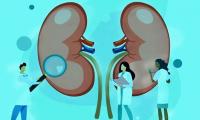The workplace of today
Every Pakistani aspires to the fruits of progress although many insist on continuing to live in the 16th century. Our state is too preoccupied with advancing the ideological indoctrination project to be able to pay attention to the kind of literacy that gives people a realistic shot at improving their lives. Currently, four subjects in high-school are dedicated to this goal alone: Pakistan Studies, Islamiat, (given the type of content) Urdu and (in Punjab and Khyber Pakhtunkhwa) Tarjama-tul-Quran-ul-Majeed, the most recent addition.
At the HSSC-level this leaves only four, half of all subjects, for other pursuits – English (compulsory) and three other subjects of students’ choice. Cambridge school system students usually take around 10-11 different subjects through their IGCSE/O-/A-level and must dedicate at least three / four of them to meeting the same requirements. For reference, Saudi Arabia requires students to study Arabic and Islamiat up to grade 8. After that, at least in international schools, these subjects become electives for those that seek to continue studying them at higher levels.
If you are a student counting on public school curricula or even foreign school systems subject to the local policy constraints to teach you enough to become competitive as global talent, please, don’t.
Every four years, the International Association for the Evaluation of Educational Achievement TIMSS (Trends in International Mathematics and Science) study assesses science and math achievement levels in schools in 60 countries. The most recent 2019 TIMSS study is the first Pakistan participated in. The average score of Pakistan’s grade-4 students in both Science and Mathematics puts it at second-last place, one spot above the Philippines (https://timss2019.org/reports/average-achievement-math-m4/). I cannot imagine any reason why our standing would be much better at higher grade levels. This is where we stand.
A few months earlier, I wrote about the basics of how to go about selecting a university programme and basic financial literacy, things every young adult must know (‘A beginner’s guide to adulting’, January 12, 2023). In continuation, I want to focus on the acquisition of other skills, irrespective of your primary degree.
A university degree is a basic prerequisite for a lot of jobs, but there are additional skills that make workers more productive, more effective and, therefore, more employable. In the 90s and 2000s, it was the use of computers, the internet, and office productivity suites. In the 2010s, it was data analysis and scripting. In this decade, AI and Machine Learning (ML) powered tools may take that role.
This is not to say that everyone has to transition to an ML expert, but every working professional needs to develop an understanding of this technology. At the very least, every working professional should understand that AI/ ML systems are not magic. There should be a basic understanding of how they work, what is needed to build one, what their limits are, which friction points they could remove, and which processes they could make more efficient in their industry. Being knowledgeable about the limits of any new technology cuts through hype and makes it less likely some self-declared ‘guru’ takes one for a ride. If you have more working years ahead of you, you might want to go beyond the minimum.
The collective term for the types of AI we have seen over the last year is generative AI. The recent wave began with sophisticated image generating AIs. Users are able to provide a detailed textual description (a ‘prompt’) for an image and specify a style and in a few minutes time, an image generating AI produces (usually) a number of versions. Some early favorites include Midjourney and Dall-E / Dall-E2. Underlying them is a type of Deep Neural Network (DNN) called diffusion model.
A closely related but different task is Neural Style Transfer performed by another type of DNN called Convolutional Neural Networks popularized by DeepArt.io and the Prisma app. A few months ago, the Lensa AI app which allows users to generate stylized versions of user-provided portraits became popular.
You must have seen the wave of generative Artificial Intelligence (AI) tools that have become public since the launch of OpenAI’s ChatGPT 3.5 Large Language Model (LLM) at the end of November. Media everywhere – traditional, electronic, and social – has been inundated by prognostications about imminent changes to the way we work. While LLMs are having their moment in the sun right now, the fact is that the math, the theory underpinning them, was developed over a decade earlier.
It will not be much longer until these tools land in your hands (and you will face higher expectations of productivity). Microsoft, a major investor in OpenAI, had first dibs on ChatGPT and has announced integration of the next version into its Office suite by the name Microsoft 365 Copilot. It will be able to turn meeting notes into documents, documents into presentations, analyze spreadsheet data, auto-draft emails, and even create meeting minutes of online audio/video meetings.
A deep understanding of AI and ML requires a good background in mathematics (linear algebra, calculus, statistics) and knowledge of programming. If you are interested in a better understanding of AI and ML but your academic background seems far removed from computer science and you think yourself unqualified for such study, do not be deterred.
In a recent conversation with Dr M Usman Ilyas, program director for PG programmes in computer science at the University of Birmingham Dubai, I learnt that in addition to its regular MSc programs for applicants with computer science or other science and technology backgrounds, the university offers what it calls a conversion programme – an MSc in Artificial Intelligence and Computer Science. Conversion programmes are aimed at candidates that have no computer science or engineering background but either want to make a career transition (hence the name ‘conversion programme’) or use expertise from the programme in their existing line of work. The programme receives applications from people with a wide variety of undergraduate qualifications in economics, finance, business, international relations, biotechnology, and even English!
In China, many universities require all undergraduate students to take basic computer science courses – programming, app development, algorithms, web programming, databases, etc. Massive Online Open Course (MOOC) providers like Coursera, EdX, etc have been providing flexible and less expensive options that demand less commitment than a university degree.
The Hugging Face AI community maintains an open library of around 300,000 models for various detection and classification tasks (generative, natural language processing, text / audio / image / video / other data processing), libraries, datasets, etc., that are free for anyone to use in their applications. These tested models perform the heavy lifting of tasks like object detection, image segmentation, translation, and text-to-speech / image-to-text / text-to-video synthesis, even an early version of ChatGPT (2.0), and many more. The Hugging Face community has made it easier than ever to include such capabilities into a system.
The healthcare sector provides a glimpse of how AI and ML are transforming industries today. Previously, patients with rare diseases were limited in their ability to get a diagnosis and treatment by their access to medical expertise. But now, diagnostic systems powered by AI and ML trained on the collective knowledge of thousands of doctors can effectively provide an opinion equivalent to that of a doctor with the experience of hundreds of thousands or millions of cases. This transformation is the result of the collaboration between medical professionals and AI and ML experts. Transformations of varying impact and magnitude are coming to every sector and industry.
The full impact of this recent generation of AI systems burrowing into virtually every industry will work itself out in the coming years, but what is certain is that this is not a passing fad. By all indications, for anyone that wishes to remain in the workforce for another few decades, it will be essential to become knowledgeable about AI / ML either as a builder / developer or as a user. A friend, who is the principal scientist and lead of the Deep Learning Group at one of the world’s biggest technology consulting companies in India, recently said that one of his filters for job applicants these days is to ask them about what they have used ChatGPT for. Anyone who is not excited enough or worse, simply unaware of the existence of LLMs, is an almost certain reject.
This is not the job market of tomorrow – this is where things stand today. We live in a world where every year another country that once had a basket-case economy is finding its feet, getting its act together and growing. You probably hope to be professionally competitive in the global workplace. To understand where our lawmakers' head is at, consider this: The computer studies subject announced with much fanfare as part of the Single National Curriculum (SNC) has been made optional, non-compulsory, because most schools are not equipped with computer labs and the government is unwilling to commit the funds needed.
Yet, in December, the outgoing chief minister of Punjab did manage to find funds to announce the hiring of 100,000 huffaz for teaching positions. Do not count on the local / public education system to get you adequately ready for it – they are too busy ensuring their grip on power. You are on your own.
The writer (she/her) has a PhD in Education.
-
 2026 Golden Globes: Nikki Glaser Mocks Leonardo DiCaprio's Notorious Dating Habits
2026 Golden Globes: Nikki Glaser Mocks Leonardo DiCaprio's Notorious Dating Habits -
 Prince Harry 'loved' Seeing Charles, Eyes More Meetings With King: Source
Prince Harry 'loved' Seeing Charles, Eyes More Meetings With King: Source -
 Chad Michael Murray Admits 2000s Fame Could Have 'destroyed' Him
Chad Michael Murray Admits 2000s Fame Could Have 'destroyed' Him -
 Emma Stone Reflects On Diane Keaton's 'most Valuable' Lesson
Emma Stone Reflects On Diane Keaton's 'most Valuable' Lesson -
 Kanye West Once Paid $1 Million Per Day To Record Album: Here's Why
Kanye West Once Paid $1 Million Per Day To Record Album: Here's Why -
 Prince Harry Hopes To Show Archie, Lilibet Where He 'grew Up'
Prince Harry Hopes To Show Archie, Lilibet Where He 'grew Up' -
 Jacob Elordi Names Childhood Crushes Including A Major 60s Star
Jacob Elordi Names Childhood Crushes Including A Major 60s Star -
 Kristin Davis Dicusses Fate Of Her Sex And The City Character
Kristin Davis Dicusses Fate Of Her Sex And The City Character -
 Noah Wyle Gushes Over 30-year Bond With George Clooney: 'Real Touchstone'
Noah Wyle Gushes Over 30-year Bond With George Clooney: 'Real Touchstone' -
 Zara Larsson Steps Up Criticism Against 'evil' Policies
Zara Larsson Steps Up Criticism Against 'evil' Policies -
 Adam Sandler Jokes About Aging As He Accepts Career Honour
Adam Sandler Jokes About Aging As He Accepts Career Honour -
 Royal Stalker Cases Increase Following Harry, Meghan's Marriage: Report
Royal Stalker Cases Increase Following Harry, Meghan's Marriage: Report -
 Sarah Ferguson Eyes Princess Diana’s Private Letters In Bid To Secure Future
Sarah Ferguson Eyes Princess Diana’s Private Letters In Bid To Secure Future -
 Andrew Plots Secret Sales Of Royal Jewels Amid Royal Lodge Eviction
Andrew Plots Secret Sales Of Royal Jewels Amid Royal Lodge Eviction -
 Abbott Elementary Star Chris Perfetti Hints At What To Expect From Season 5
Abbott Elementary Star Chris Perfetti Hints At What To Expect From Season 5 -
 Prince William Always Ready To Step Up: ‘He’s Barely Able To Contain His Fury When Kate’s Involved’
Prince William Always Ready To Step Up: ‘He’s Barely Able To Contain His Fury When Kate’s Involved’



